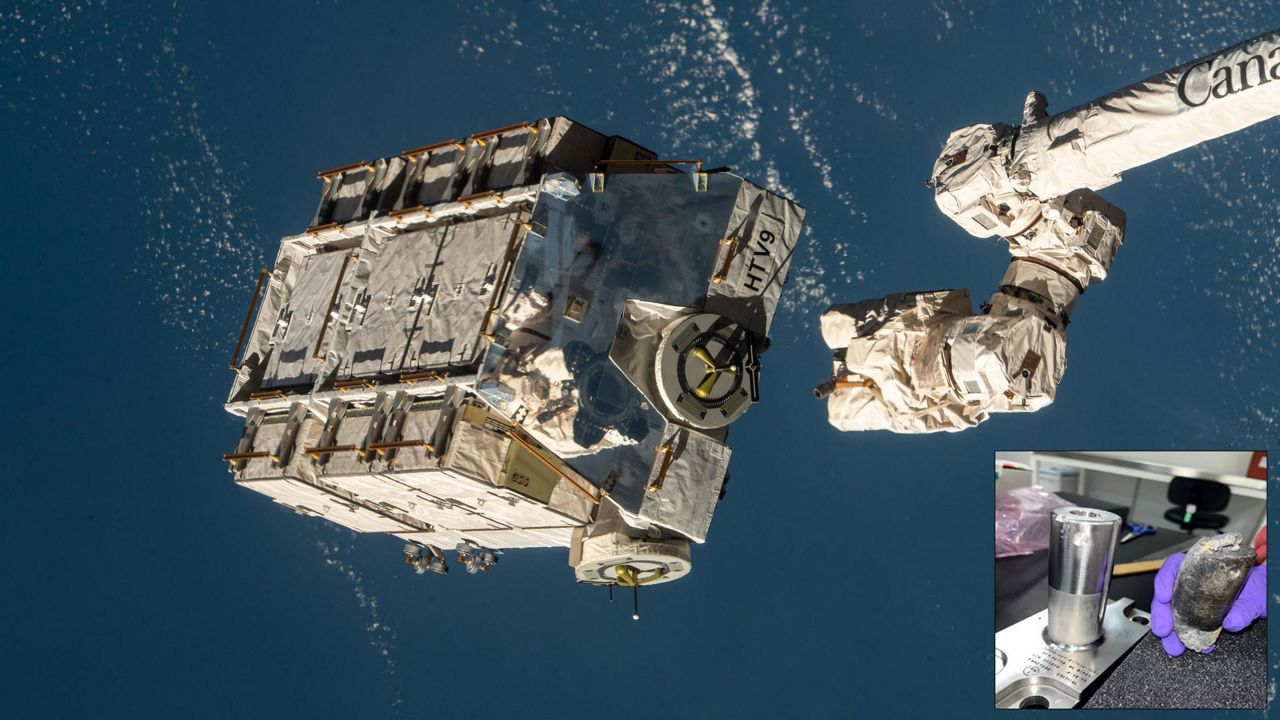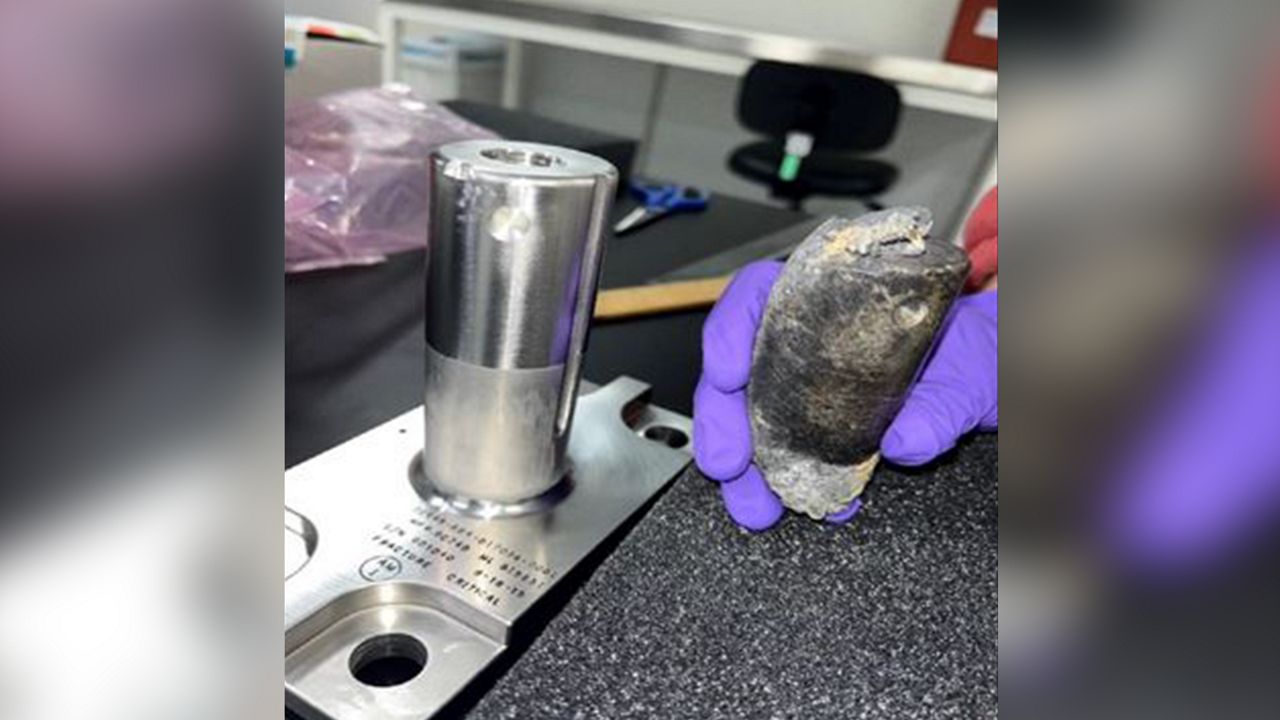FLORIDA — Last month, a Naples man reached out to NASA via X, formally known as Twitter, asking for help in identifying an object that crashed through his home on March 8.
On Monday, the U.S. space agency confirmed that the mystery object came from the International Space Station.
What You Need To Know
- U.S. space agency confirmed that a mystery object that crashed through a Naples home last month came from the International Space Station
“Based on the examination, the agency determined the debris to be a stanchion from the NASA flight support equipment used to mount the batteries on the cargo pallet,” NASA stated in a blog post.
According to NASA, the object left the ISS in March 2021 when ground controllers used a robotic arm to release a cargo pallet that had “aging nickel hydride batteries from the space station following the delivery and installation of new lithium-ion batteries as part of power upgrades on the orbital outpost."
The hardware’s total mass was about 5,800 pounds when it was released from the ISS. But three years later, and after falling through Alejandro Otero’s home, it slimmed down to a 1.6-pound piece of metal that is 4 inches in height and 1.6 inches in diameter, according to NASA.
Hello. Looks like one of those pieces missed Ft Myers and landed in my house in Naples.
— Alejandro Otero (@Alejandro0tero) March 15, 2024
Tore through the roof and went thru 2 floors. Almost his my son.
Can you please assist with getting NASA to connect with me? I’ve left messages and emails without a response. pic.twitter.com/Yi29f3EwyV
Spectrum News reached out to Otero for comment and is awaiting a reply.

In a Monday blog post, NASA admitted that experts believed the hardware would "fully burn up during entry through Earth’s atmosphere on March 8, 2024."
“The International Space Station will perform a detailed investigation of the jettison and re-entry analysis to determine the cause of the debris survival and to update modeling and analysis, as needed,” NASA stated.
Before NASA confirmed what the “space junk” was, Harvard-Smithsonian Center for Astrophysics’ Dr. Jonathan McDowell told Spectrum News that he thought it was part of a pallet of discarded equipment that was dumped from the ISS.
“The extrapolated path of the reentering debris was right over the Ft Myers/Naples area, and is within the uncertainty range of how far the debris would have gotten,” he said in an email.
McDowell said that small pieces of debris re-enter Earth every day, but bigger objects, like the one in Naples, happen monthly.
Spectrum News reached out to NASA for comment and is awaiting a response.



